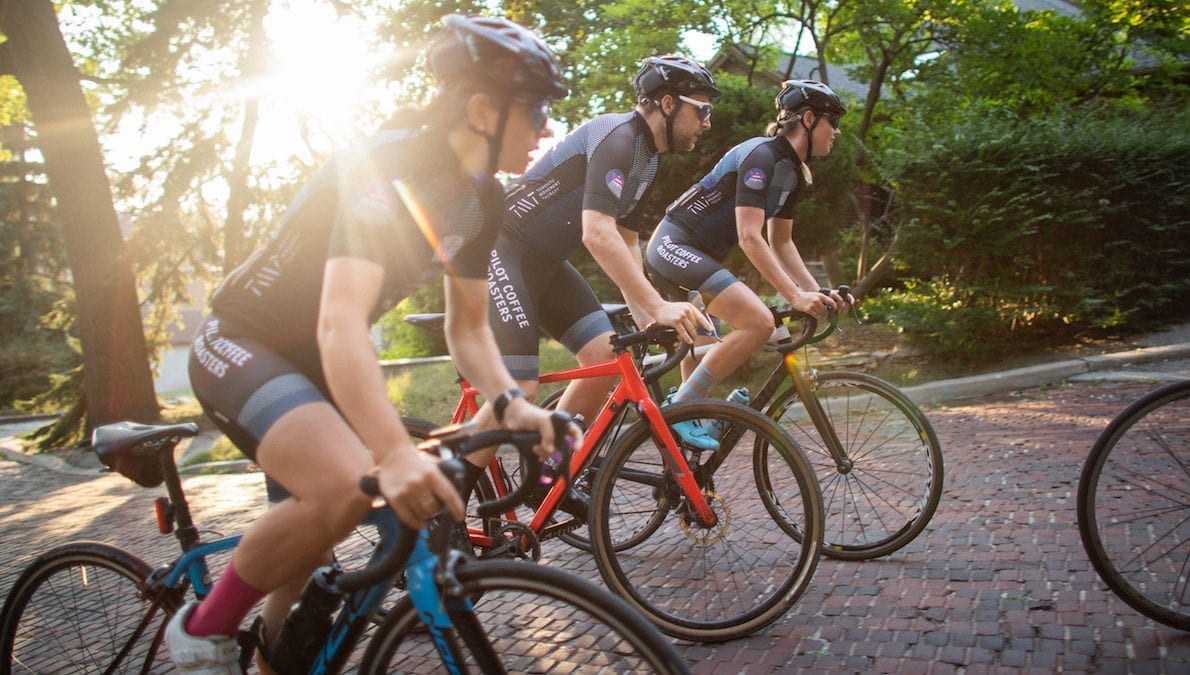How to take better photos on your rides
Tips from a professional photographer
 Photo by:
Nick Iwanyshyn
Photo by:
Nick Iwanyshyn
As a cyclists, there are often moments on rides when you want to capture the beauty or uniqueness surrounding you. You pull out your phone and snap a few pics, but when you get home they look nothing like the photos you see on Strava and Instagram. What are you doing wrong?
Nick Iwanyshyn is a professional photographer who has worked for Maclean’s, the Globe and Mail and Easton, 3T Bikes, Specialized, Canadian Cycling Magazine, Liv and Muc-Off, among others. With (likely) no upcoming race season and smaller group rides, he says that right now is the perfect moment to work on your photography skills. “There’s no better time than now to experiment with this,” says Iwanyshyn. “The rides aren’t as serious, the groups are smaller and there’s a bit more room to be creative.”
View this post on Instagram
He broke down some tips and tricks for getting better photos during your rides and exploring photography as a creative outlet.
Pick your camera
“Phones cameras are so good now,” says Iwanyshyn—for most people, a phone camera will do just fine. That being said, if you are interested in packing a camera for mid-ride pics, he recommends looking into small point and shoots cameras. Current models are easier on the wallet than a DSLR, take quality photos and video and, most importantly, easily fit into a bar bag or even your back pocket.
RELATED: Tricks for taking better photos of your bike
If you want to bring a larger camera along for a ride there are a number of strap mechanisms available, although some cyclists have been known to build their own straps.
Plan ahead
If you’re planning on taking some good photos during a ride, look at the route and think about some areas of interest. Will there be switchbacks? a scenic segment or climb?
 photo: Nick Iwanyshyn
photo: Nick Iwanyshyn“Not every environment will lend itself to a good photo,” says Iwanyshyn, “but if you identify a cool corner or hill you can use it to add a scene setting context to photo.”
Even the most mundane local route will have points that are more interesting than others. If you always take photos at the same location during your classic loop think about a different angle you could explore or a way you could mix it up and experiment.
Let others know your intentions
Iwanyshyn suggests being upfront about your plans to take photos during the ride. Although it’s not the norm in the time of social distancing, “If you’re riding with 10 people you don’t know, depending on where you’ll be posting the photos there’s definitely a question of consent,” he says. “Either let people know your intentions or fall back on just photographing your friends.”
View this post on Instagram
He says it’s also important to let people know if you’re riding ahead or falling back to get a good shot, otherwise the group might try to meet your attack or slow down for you to catch up.
Framing and lighting
View this post on Instagram
Riding ahead or falling behind can lend a new perspective other than the standard mid-pack photo of cyclists’ backs. “Everybody reverts to portrait for Instagram stories,” says Iwanyshyn, “but landscape presents a bit bigger on Instagram. It helps to loosen it up a little and adds a bit of context to the scene—it shows where someone is coming or going from.”
In terms of lighting, he mentions the benefits of ‘golden hour’—the period slightly before the sunset or shortly after the sunrise when daylight is redder and softer (perfect for photographing morning or evening rides). Iwanyshyn says it’s good to try playing with the light. “A lot of people default to taking photos with the sun behind,” he says, “but it’s cool to experiment.” For example, “climbing with the morning sun beside you creates a nice flare and silhouetting.”
Leaving room for error
Cyclists move quickly and there’s a small window of opportunity to get the perfect shot. Iwanyshyn says even professional NHL and NBA photographers will use a technique called motor driving (iphone users will know this as burst mode) in which they take shots in rapid succession and select the best one after the fact. While you’re learning and practicing taking photos, this technique can help you figure out what works.
 photo: Nick Iwanyshyn
photo: Nick IwanyshynSimilarly, if you’re shooting a video, he suggests always shooting more than think you’ll need. “Leave a bit of space at the start and the end so you can crop the video,” he says. “You’re often shakey at the start and end of the video, so the idea is to get more and take the best bit.”
You probably won’t nail the first photos you take, but, as with everything, practice makes perfect. “The best way to get better at something is to do it pretty often,” says Iwanyshyn. “You’re not gonna be an amazing photographer off the bat, but the more you practice and make mistakes the more you’ll learn.”
